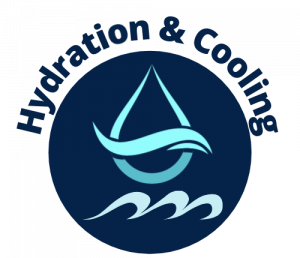Discover the potential health hazards posed by neglected hydration equipment and how proper maintenance can protect your athletes from waterborne illnesses and contamination.
_______________________________
Health Risks of Improperly Maintained Hydration Equipment
When providing hydration solutions for your athletes, the cleanliness of your equipment is just as important as the water itself. Many athletic programs focus on having enough water available but overlook the critical aspect of equipment maintenance. Improperly maintained hydration stations, water carts, and coolers can quickly become breeding grounds for harmful microorganisms. These contaminants pose serious health risks to your athletes, potentially affecting their performance and overall wellbeing. At Hydration & Cooling, we understand these challenges and aim to help athletic directors and coaches implement proper maintenance protocols to ensure safe hydration for their teams.
Common Contaminants in Poorly Maintained Hydration Equipment
Hydration equipment that isn’t regularly and properly cleaned can harbor various harmful microorganisms. Water reservoirs, spigots, nozzles, and drinking stations are particularly vulnerable areas where bacteria thrive in the moist environment. Some of the most common contaminants include:
Bacterial Growth
Stagnant water in tanks and tubing creates ideal conditions for bacteria like E. coli and Pseudomonas to multiply. These bacteria can cause gastrointestinal issues including nausea, vomiting, and diarrhea – symptoms that can sideline athletes during crucial training or competition periods. Even more concerning is the potential for bacterial biofilms to form on interior surfaces, creating colonies that are particularly difficult to remove without proper cleaning protocols.
Mold and Fungal Contamination
Dark, damp spaces within hydration systems provide perfect conditions for mold and fungus growth. These contaminants not only affect water taste but can trigger allergic reactions and respiratory issues in sensitive individuals. The black or green residue often visible in neglected systems is typically mold that has been allowed to proliferate unchecked.
Mineral Build-up and Scale
Over time, minerals from water create scale deposits inside tanks and lines. This buildup not only affects water flow and equipment function but can also harbor bacteria protected from standard cleaning methods. These deposits create rough surfaces where contaminants can attach and grow, making thorough cleaning increasingly difficult.
Health Consequences for Athletes
The impact of contaminated hydration equipment extends beyond basic hygiene concerns. Athletes who consume water from improperly maintained systems face several potential health issues:
Gastrointestinal Illnesses
The most immediate and common consequence is stomach upset, ranging from mild discomfort to severe symptoms requiring medical attention. When multiple team members experience similar symptoms, contaminated hydration equipment is often the common factor.
Decreased Performance
Even mild symptoms from waterborne contaminants can significantly impact athletic performance. Dehydration from avoiding questionable water sources or energy depletion from fighting off infections can mean the difference between winning and losing in competitive sports.
Spread of Illness Through Teams
Shared hydration equipment creates an efficient transmission route for contagious illnesses. What begins as one sick player can quickly spread through an entire team when communal water sources are contaminated, potentially derailing an entire season.
Maintaining Safe Hydration Systems
Protecting your athletes requires implementing consistent, thorough maintenance procedures. Regular cleaning isn’t just about appearance – it’s about eliminating hidden health hazards that standard rinsing won’t address.
Regular Cleaning Schedule
Effective maintenance requires more than occasional attention. Establish a consistent cleaning schedule based on usage frequency, with more intensive cleaning after heavy use periods. Daily quick-clean procedures should be supplemented with weekly deep cleaning of all components that contact water.
Proper Cleaning Techniques
Using the right cleaning methods is crucial for eliminating contaminants without damaging equipment. This includes disassembling components for thorough access, using appropriate cleaning solutions safe for food-contact surfaces, and ensuring complete drying to prevent new bacterial growth.
Quality Equipment Selection
Not all hydration systems are created equal when it comes to maintenance. Quality systems like those we provide at Hydration & Cooling are designed with cleanability in mind, featuring accessible components and materials resistant to biofilm formation.
Take Action Now to Protect Your Athletes
Don’t wait for a health issue to highlight problems with your hydration equipment. Implementing proper maintenance protocols today can prevent illness, maintain performance, and extend the life of your investment. Our team at Hydration & Cooling is ready to help you establish effective cleaning procedures and provide equipment designed for both performance and safety.
Ready to Upgrade Your Hydration Safety?
Contact our team today to learn about our easy-to-maintain hydration stations and cooling systems designed with athlete health as the priority. We’ll help you select equipment that delivers clean, safe hydration while minimizing maintenance challenges.
Call us at 828-820-8600 or visit our showroom at 100 Coxe Ave. Unit 403, Asheville, NC 28801. When life gets hot, we do cool – and we do it safely!
